Religion in Japan is present in 2 major beliefs Shinto and Buddhism. Buddhism was brought to the mainland in the 6th century, whereas Shinto is as old as Japanese culture. Since then, the two religions have coexisted reasonably peacefully, even complementing one another to some extent. The majority of Japanese people identify as Buddhists, Shintoists, or both.
The majority of Japanese people nowadays do not place a high value on religion. People, in general, observe religious rites at births, marriages, and funerals. Also may visit a shrine or temple on New Year’s Day and attend local festivals (matsuri), the majority of which are religious in nature.
Contents of this publication:
Religions and Philosophies in Japan
– Shinto ⛩️
Shinto (“The Way of the Gods”) is the indigenous Japanese religion, as old as the country itself. Along with Buddhism, it is Japan’s most important religion.
Introduction
Shinto has neither a founder nor sacred scriptures such as the sutras or the Bible. Because Shinto is firmly ingrained in the Japanese people and customs, propaganda and preaching are also uncommon.
Kami are the “Shinto gods.” Wind, rain, mountains, forests, rivers, and fertility are examples of holy spirits that take the shape of elements and concepts essential to life. Humans become kami when they die and are venerated as ancestral kami by their families.
Some temples even have the kami of remarkable persons enshrined. Amaterasu, the Sun Goddess, is Shinto’s most significant kami.
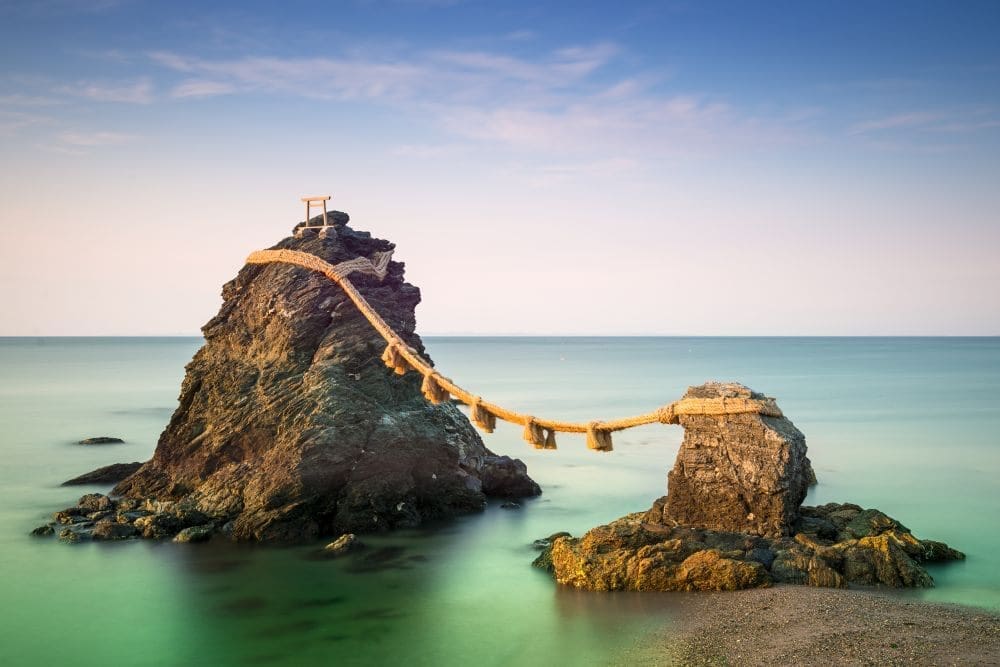
Meoto Iwa, The Married Rocks in Ise, Japan
There are no absolutes in Shinto, unlike many monotheistic religions. Nobody is flawless, and there is no absolute right or wrong. Shinto is an upbeat religion based on the belief that humans are essentially good and bad spirits produce that evil. As a result, most Shinto rites involve cleansing, prayers, and sacrifices to the kami to ward off bad spirits.
Shinto shrines are places of worship as well as kami’s residences. Most shrines hold matsuri (festivals) regularly to exhibit the kami to the outside world.
Shinto priests are those who perform rites and reside on the shrine grounds. Priests can be both men and women, and they are allowed to marry and have children.
During rites and shrine duties, priests are assisted by younger ladies (Miko). A “Miko” is an unmarried woman who wears white kimonos and is frequently the priests’ daughter.
Important aspects of Shinto art (618-907) are the shrine architecture and the cultivation and preservation of historical art forms such as Japanese Noh theater, calligraphy, and court music called “gagaku” (a dance song that originated in Tang China’s courts).
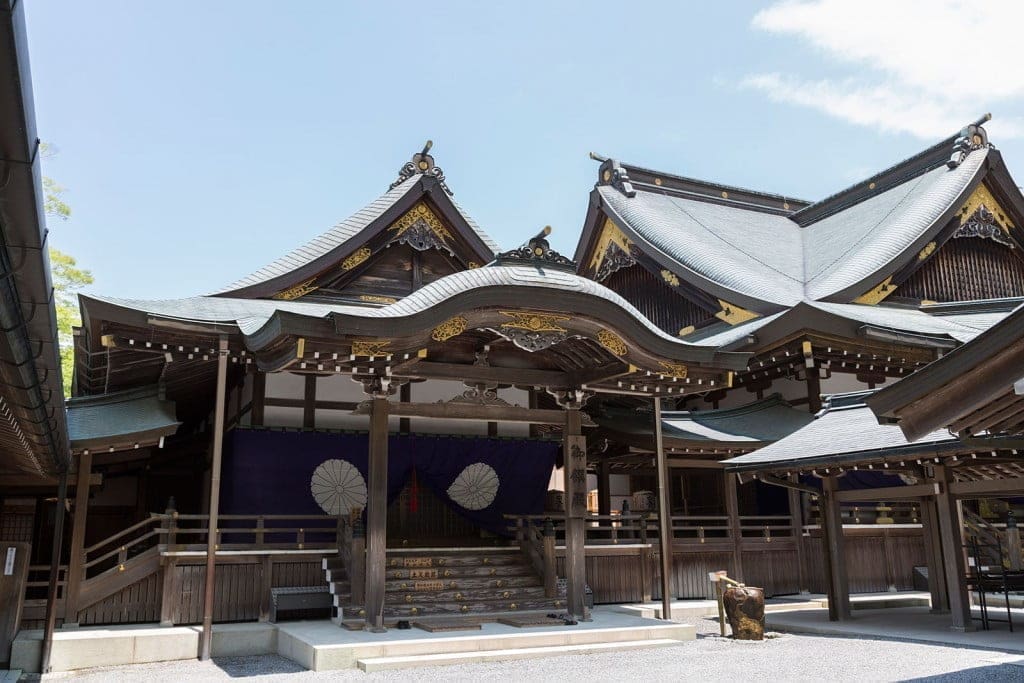
Ise Grand Shrine: Japan’s Most Sacred Shrine
History of Shinto
Following the arrival of Buddhism in the sixth century, there were a few disputes. Still, the two religions were eventually able to coexist and even complement one another by believing kami to be manifestations of Buddha.
Shinto became the official religion of Japan during the Meiji Period. Shinto priests were promoted to state positions, and significant shrines were given government financing.
The myths of the origins of Japan were utilized to build a national identity centered on the Emperor, and efforts were made to separate and emancipate Shinto from Buddhism. Shinto and the state were split apart after WWII.
Today’s Shinto
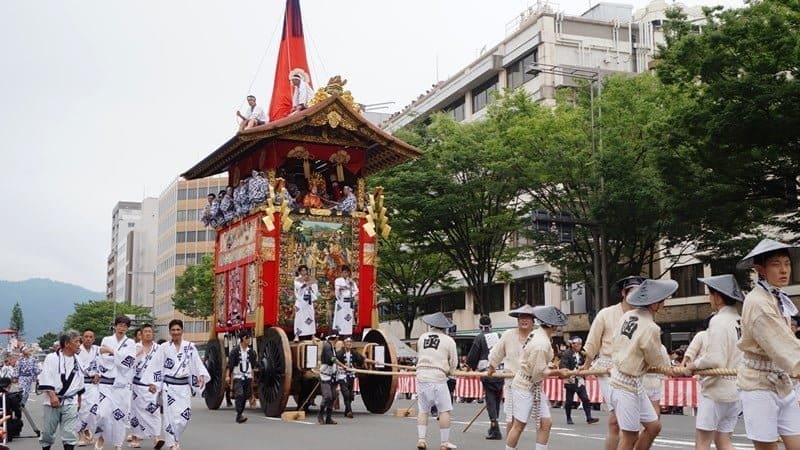
Gion Matsuri | Kyoto
People turn to Shinto for help by praying at home altars or visiting shrines. Various talismans for road safety, good health, economic success, safe childbirth, high test achievement, and more are available at shrines.
Many weddings are held in the Shinto tradition. On the other hand, death is regarded as a source of impurity and is dealt with by Buddhism. As a result, there are no Shinto graves, and most funerals are Buddhist in nature.
– Buddhism ☸️
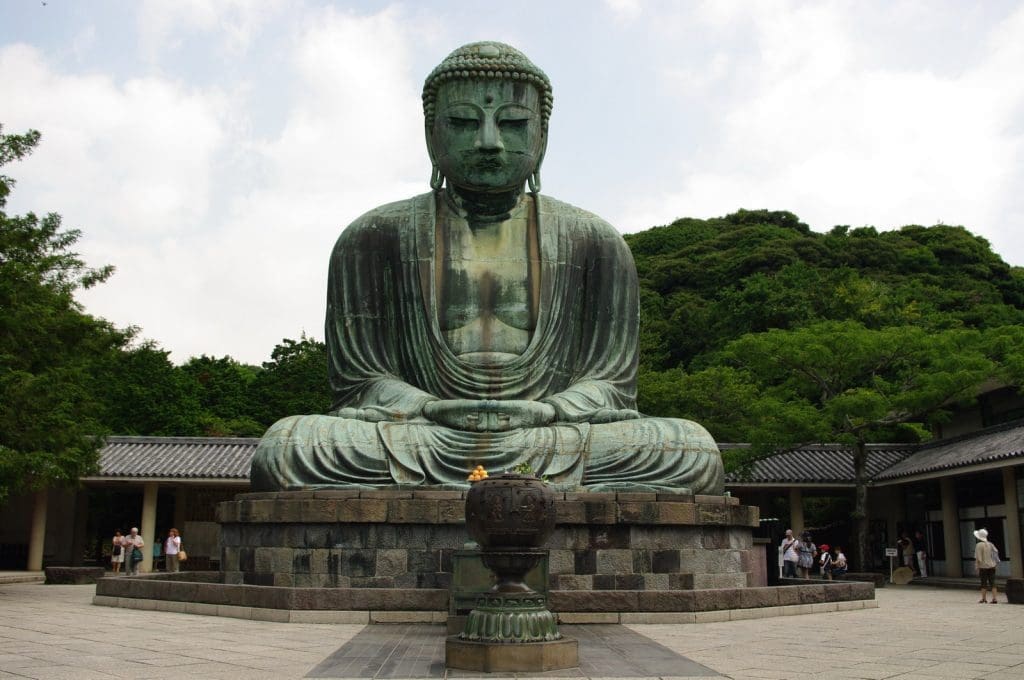
Kōtoku-in – The Great Buddha at Kamakura
In the 6th century BC, India was the birthplace of Buddhism. It is made up of the Buddha’s teachings, Gautama Siddhartha. The Mahayana or “Greater Vehicle” Buddhism is the primary branch of Buddhism that has made its way to Japan.
Buddhism arrived in Japan via China and Korea in the 6th century as a gift from the friendly Korean kingdom of Kudara (Paikche). While the governing nobility embraced Buddhism as Japan’s new state religion, it did not take hold among the common people at first due to its complicated doctrines.
Although there were some clashes with Shinto (Japan’s original religion), the two religions could coexist and even complement one another.
The major monasteries in the capital Nara, such as Todaiji, developed considerable political clout during the Nara Period and were factors in the government’s decision to relocate the capital to Nagaoka in 784 and subsequently to Kyoto in 794.
Nonetheless, for many centuries of Japanese history, the problem of politically ambitious and aggressive monks has been a source of contention for governments.
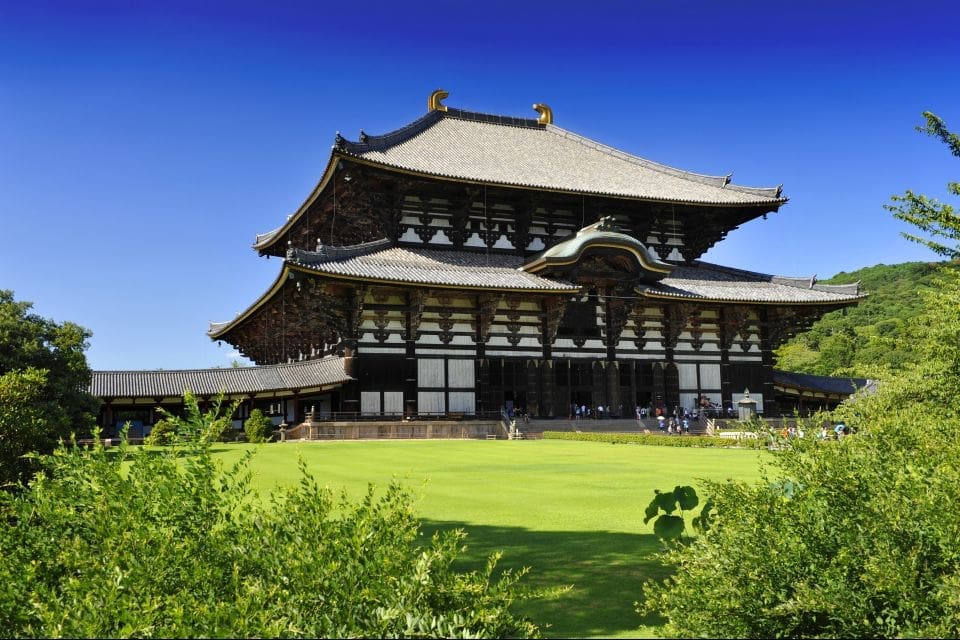
Todaiji, Nara – Japan
Two Buddhist sects were imported from China during the Heian Period: the Tendai sect by Saicho in 805 and the Shingon sect by Kukai in 806. Later, other sects split out from the Tendai sect. Among these, the most significant are listed below:
- Honen created the Jodo sect (Pure Land sect) in 1175. Because its beliefs were basic and founded on the concept that everyone may gain salvation by fervently believing in the Buddha Amida, it attracted adherents from all walks.
- One of Honen’s students, Shinran, created the Jodo-Shin sect (True Pure Land sect) in 1224, with even more condensed doctrines. Millions of people still follow the Jodo cults today.
- The Zen cult was imported from China around 1191. It was trendy among members of the military elite because of its complex ideas. Meditation and discipline, according to Zen teachings, can lead to self-enlightenment.
- Nichiren established the Nichiren sect in 1253. Because of its intolerance against other Buddhist sects, the sect was unique. Many millions of people follow Nichiren Buddhism today, and numerous “new faiths” are founded on Nichiren’s teachings.
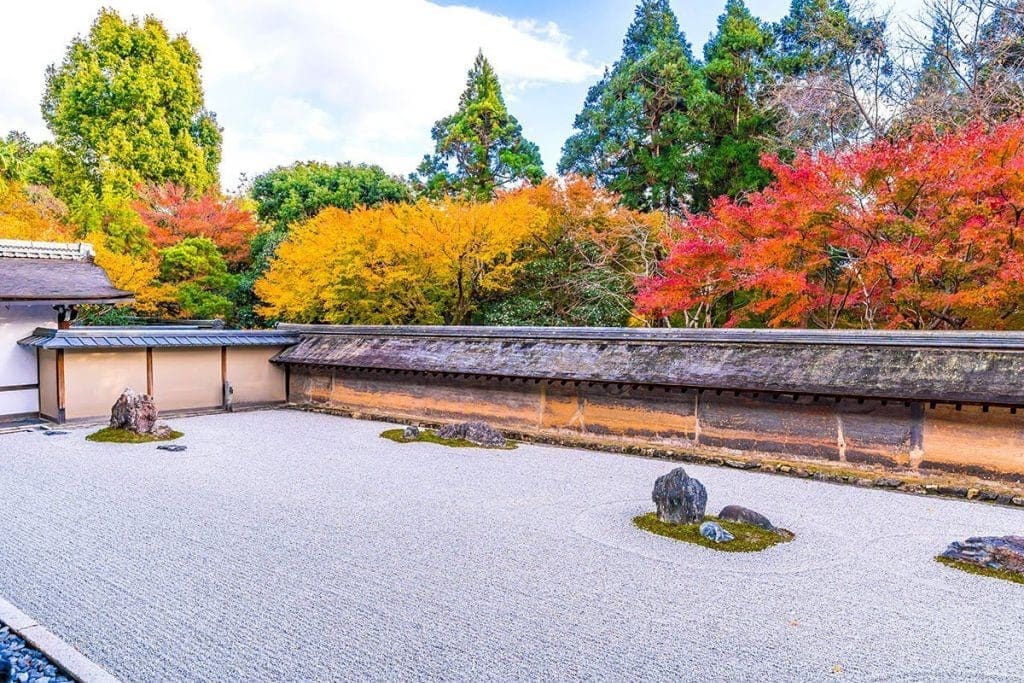
Ryoanji Temple: Kyoto’s Best Zen Rock Garden
At the end of the 16th century, Oda Nobunaga and Toyotomi Hideyoshi attacked the militant Buddhist monks and effectively destroyed Buddhist power in the political sphere. When the new government embraced Shinto as the national religion and attempted to separate and emancipate it from Buddhism in the early years of the Meiji Period, Buddhist institutions were once again targeted.
Approximately two-thirds of the Japanese population now identify as Buddhists. However, religion has a little direct impact on the typical Japanese person’s day-to-day existence. Funerals are generally conducted in a Buddhist manner, and many households maintain a modest house altar to honor their ancestors.
Until next post.
Sayōnara (さようなら)
0 Comments